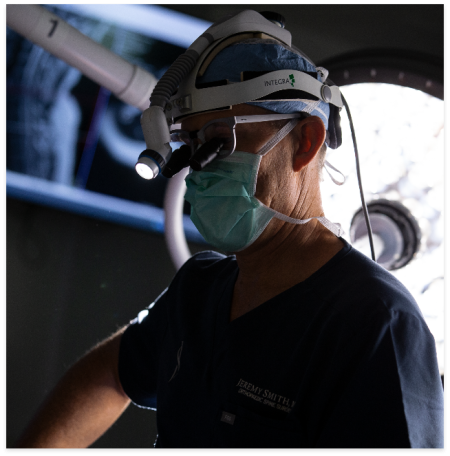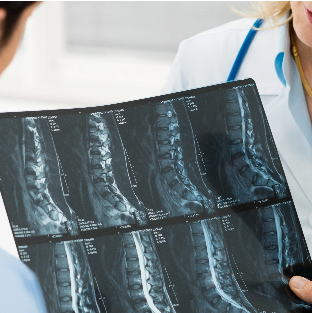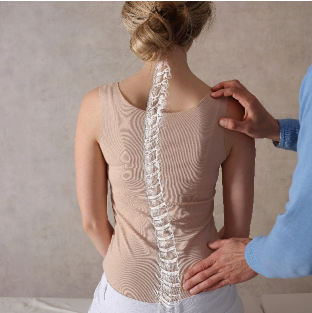
There are several less common spinal conditions that cause pain but can also be treated and improved. Some of these conditions can be treated without the need for surgery but the best option for a pain-free future requires an in-depth analysis of your condition. There are a number of symptoms related to a wide variety of spinal conditions and/or traumas that may signal that something more serious is wrong. Some of these symptoms include: loss or change of sensation, loss of motion, loss of urine or bowel control, tingling or numbness in the extremities, pressure or stiffness in the back, pain, exaggerated reflexes or spasms, weakness, difficulty walking, balance issues, breathing issues, or an unnatural posture in the back or neck.
If you are experiencing any of these symptoms, reach out to Dr. Jeremy Smith, M.D. and get the support you need in gaining a better understanding of the underlying issue causing these problems.
Scoliosis is an abnormal curvature of the spine that causes a physical deformity. This condition turns the spine into the shape of a “C” or an “S” instead of an “I” and can occur at any age. A wide variety of conditions cause scoliosis, but the symptoms of this condition can range anywhere from being asymptomatic, to having uneven shoulders or leg lengths, to breathlessness.

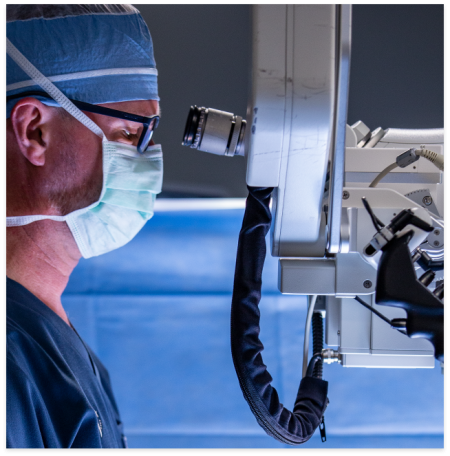
Scoliosis and Spinal Deformities are diagnosed through a series of physical, neurological, and diagnostic imaging tests, all of which are used to identify the cause(s) of the condition. Although treatment is not required for a spinal curve below 20 degrees, it is advisable that this condition be monitored over time to ensure it is not progressing. A back brace may prevent the need for surgery if the progression is identified early on. Unlike some deformities, scoliosis may affect vital functions in the body. Patients suffering from a severe curve may be helped with surgery to realign the spine into a more natural curvature with the aid of metal rods and screws.

Any damage or injury to the spine, from the neck to the lower back, may result in spinal trauma. The spine is made up of vertebrae that protect and enclose the spinal cord. Any change in that system can create changes in sensation, strength, and other body functions. Some risk factors to spinal trauma include: being an active young adult, male, engaging in high-risk activities, or having a disorder of the bone or joints. Spinal trauma can create sensory changes including: tingling, stiffness or numbness. Whatever condition may result from the impact of spinal trauma, an assessment of your strength, mobility, and sensation may be done in order to evaluate your unique condition.
Investigating injuries caused by spinal trauma may include physical exams that test strength, sensation and movement, as well as imaging (such as MRI, CT scans, and X-rays). After identifying the impact that a spinal trauma has had on the nerves and surrounding structures, some common treatments may include: medications, rehabilitation, stabilization of the spine (through the use of a brace or neck collar), and in the case of fractured vertebrae, instability, improper alignment, or herniated discs, surgery. Every day there are medical advances in experimental treatments for spinal traumas that target new ways to control inflammation, stop cell death, and promote nerve regeneration.

Spinal infections are bacterial or fungal infections that develop in or around the spine or backbone. Spinal infections are more common in people with history of intravenous drug use, previous spine surgery/procedures, dental infections, immunosuppresion, long-term use of steroids, malnutrition, Diabetes Mellitus, HIV infection, and cancer, among others. Symptoms of a spinal infection may differ, depending on where the infection is located, however, pain usually emanates directly from the site of the infection. Other symptoms of a spinal infection may include: wound drainage, redness, swelling, tenderness near infection site, fever, chills, muscle spasms, weight loss, sensory changes, pain, bowel and/or bladder dysfunction, and even paralysis.

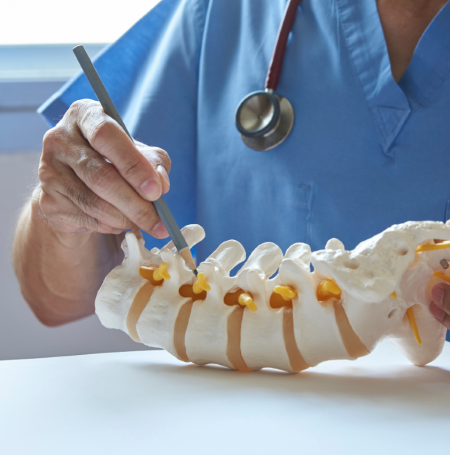
Diagnosing spinal infections can be very difficult. Imagining, lab testing, and blood cultures can help to make an accurate diagnosis. If an infection is mild and has caused no neurological effects, some treatments may include antibiotic / antifungal / antimicrobial therapy. However, in more severe cases, such as cases where there is notable bone involvement, sepsis, a large abscess, neurological deficits, failure of needle biopsy, and/or a failure of intravenous antibiotics, patients may be advised as to their best surgical options.

A spinal tumor is the abnormal growth of cells in and around the spinal cord. Spinal tumors can be benign (non-cancerous) or malignant (cancerous). There are various types of spinal tumors, but they all may cause back pain, numbness, burning or tingling, difficulty balancing, and/or bladder and bowel control challenges. Tumors that are spread to the spine from other parts of the body, such as the breast, prostate or lung, are called secondary tumors.
Because spinal tumors often cause swelling and inflammation around the spinal cord, corticosteroids and anti-inflammatory drugs can often assist with the pain this causes. External braces are also helpful in minimizing pain and providing the spine with support. Removing the tumor surgically, radiation therapy, chemotherapy, and physical therapy may also provide patients with permanent relief from spinal tumors. Spinal tumors are always treated in conjunction with a cancer-specialist or oncologist.
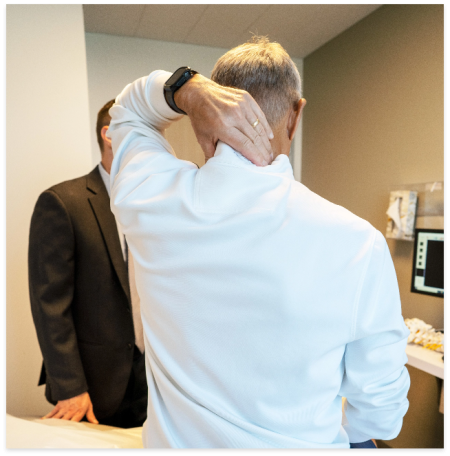
A spinal fracture is defined as a dislocation, or fracture, of the vertebrae (backbone). Spinal fractures can occur anywhere along the spine. Most spinal fractures are caused by injury or trauma from any number of accidents, falls, sports incidents or another form of injury due most commonly from high impact contact with the spine. Fractures may also be related to the weakening of bone that can occur with advanced age, also known as osteoporosis.
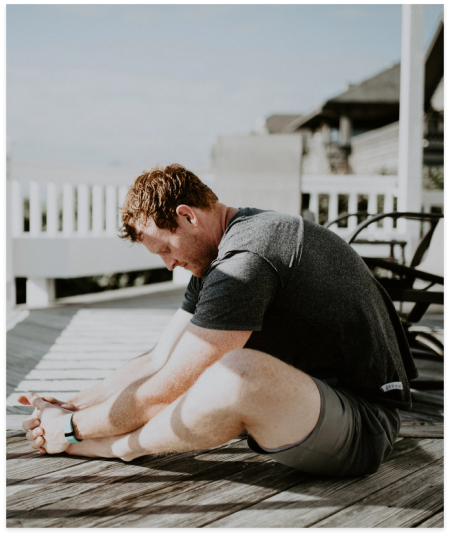
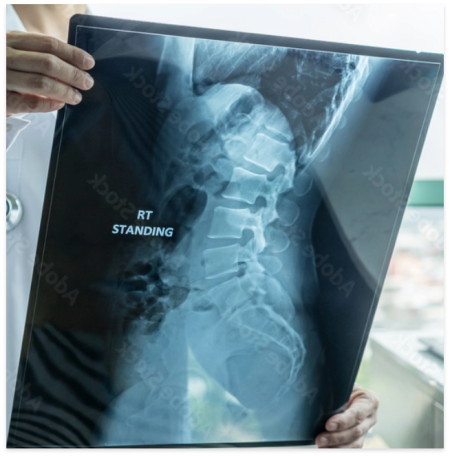
The goals of treating a vertebral fracture are to provide the spine with stability, repair the site, and to reduce pain. Although medications, back braces, bed rest, and targeted exercises are some examples of non-surgical measures applied to spinal fractures, this condition sometimes requires surgery. One surgical option for a fragility fracture (fracture caused by osteoporosis), is called a kyphoplasty. This technique uses a balloon to create space in the bone, which is then filled in with orthopedic cement. Another surgical option for a spinal fracture is vertebroplasty, a procedure where orthopedic cement is directly injected into a collapsed vertebrae. Both of these procedures restore alignment and vertebrae stability, and relieve pressure in the region.
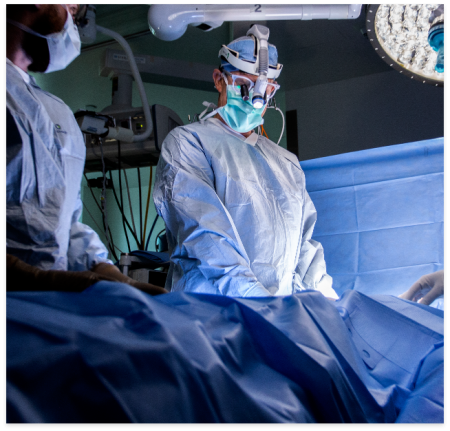
Improving spine stability and relieving a patient from pain are the main objectives of spinal surgery. However, when a surgery does not succeed at relieving pain, it may be due to a failure of accurately assessing the source of the pain. Pain is usually relieved by taking the pressure off of a compressed spinal nerve, which often involves a surgical fusion of the vertebrae. Failed back surgery syndrome can be caused by a failure of decompression surgery, the formation of scar tissue, improper rehab, or misalignment of vertebrae by the original surgery.
Nerves that are compressed due to failed back surgery, may have developed as a result of a failure to decompress the area, the development of scar tissue, and/or improper rehabilitation techniques. Both surgery and therapy may be needed in order to treat this condition. Your doctor will recommend a surgical and rehabilitation plan in order to resolve this condition fully.
